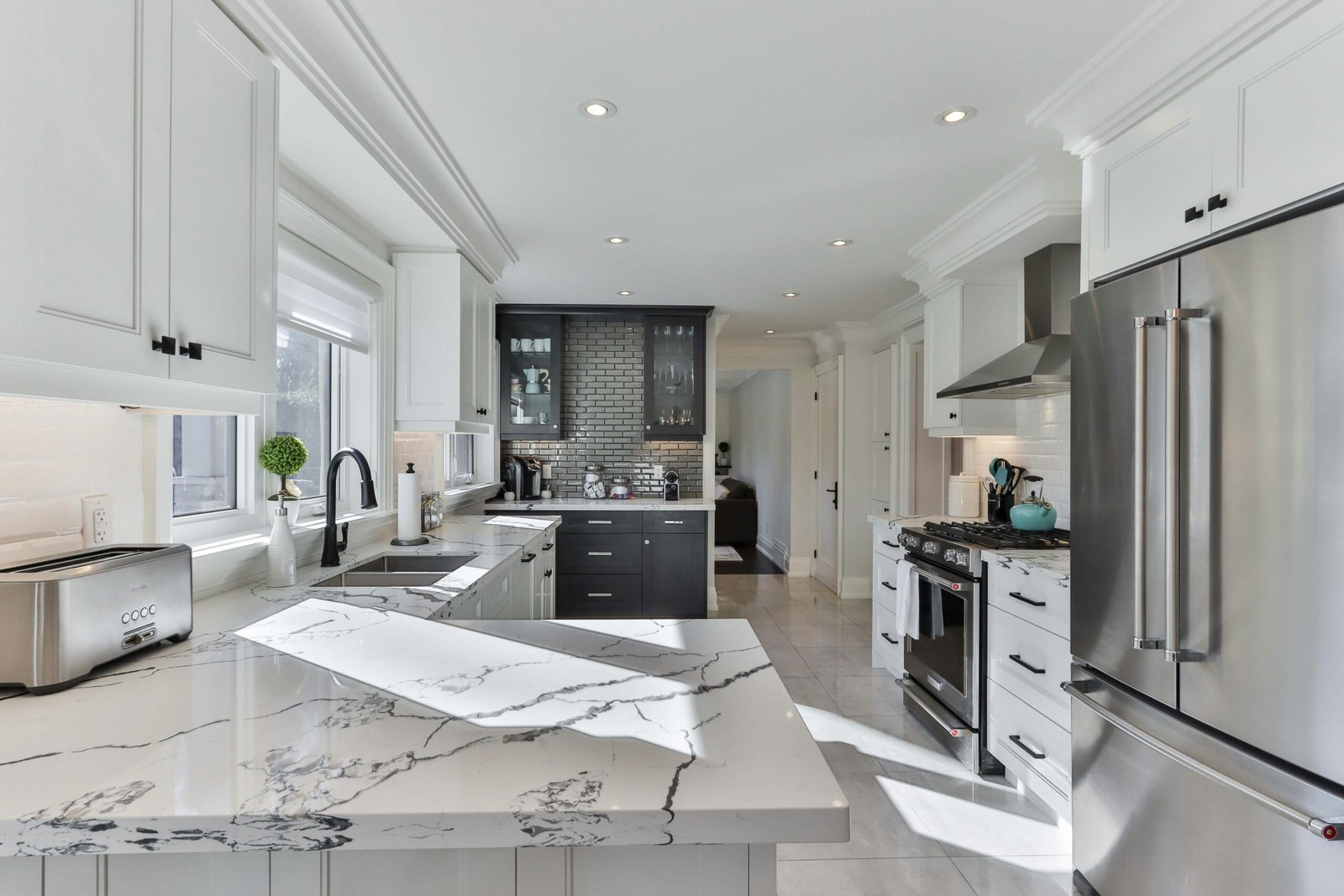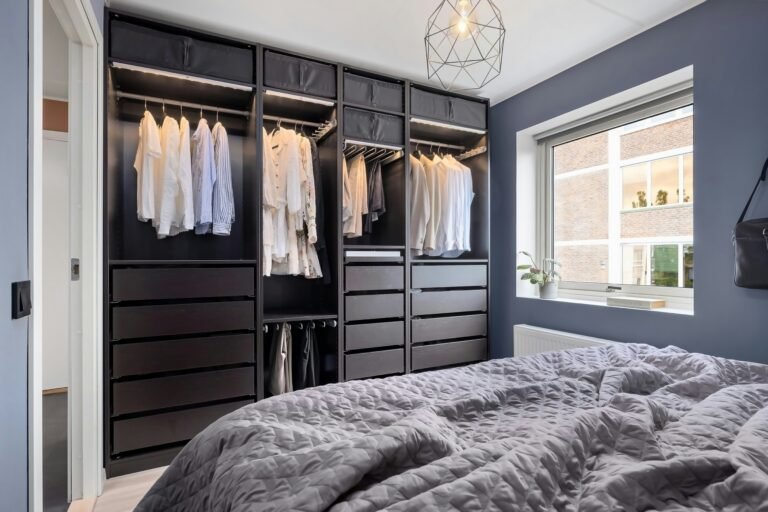The kitchen, often dubbed the heart of the home, has undergone significant transformations over the decades. From purely functional spaces to central hubs of family life and entertainment, kitchen designs have continually evolved, reflecting societal shifts, technological advancements, and changing aesthetic preferences. This article delves into the evolution of kitchen design, highlighting key trends from each decade and exploring what’s popular in contemporary kitchens.
1920s–1930s: The Dawn of Modern Kitchens
In the 1920s and 1930s, kitchens began transitioning from purely utilitarian spaces to more organized and efficient areas. The introduction of built-in cabinetry marked a significant shift from freestanding furniture, leading to more streamlined and hygienic environments. Materials like enamel and porcelain became popular for their clean appearance and ease of maintenance. The Art Deco movement influenced kitchen aesthetics, introducing geometric patterns and bold color schemes. Linoleum flooring, often in checkerboard patterns, added both functionality and style to kitchens during this era.
1940s: Simplicity and Utility
The 1940s kitchen design emphasized simplicity and utility, influenced by the economic constraints of World War II. Open shelving and pegboards were common, allowing for easy access to utensils and cookware. Colors were subdued, with soft pastels and neutral tones dominating the palette. The concept of the “self-cleaning” kitchen emerged, focusing on materials and designs that required minimal upkeep.
1950s–1960s: The Rise of the Atomic Age Kitchen
Post-war optimism in the 1950s and 1960s brought about vibrant and futuristic kitchen designs. Bold colors like turquoise, pink, and lemon yellow became popular. Innovations such as laminate countertops and chrome fixtures reflected the era’s fascination with modernity and space exploration. The open-plan kitchen concept began to take root, promoting a more inclusive approach to cooking and dining.
1970s: Earth Tones and Natural Materials
The 1970s saw a shift towards earthier tones and natural materials. Colors like avocado green and harvest gold dominated kitchen palettes. Wooden cabinetry became prevalent, and there was a growing interest in ecological and sustainable design practices. The decade also saw the introduction of kitchen islands, providing additional workspace and promoting social interaction.
1980s: The Era of Opulence
In the 1980s, kitchens became symbols of status and luxury. Granite countertops, oak cabinetry, and high-end appliances were coveted features. The concept of the “chef’s kitchen” emerged, emphasizing professional-grade appliances and ample space for culinary endeavors. This period also saw the rise of the microwave oven as a standard kitchen appliance, reflecting the era’s fast-paced lifestyle.
1990s: Minimalism and Neutral Palettes
The 1990s introduced a minimalist approach to kitchen design. Neutral color schemes, particularly white and beige, were prevalent. Open shelving and glass-front cabinets became popular, offering a sense of openness and accessibility. The decade also saw advancements in technology, with the integration of built-in appliances and the emergence of smart kitchen gadgets.
2000s: Open Concept and Stainless Steel
The early 2000s embraced open-concept layouts, merging kitchens with living and dining areas to create multifunctional spaces. Stainless steel appliances became the standard, offering a sleek and modern aesthetic. Granite countertops remained popular, and there was a growing emphasis on kitchen islands as central features for cooking, dining, and socializing.
2010s: The Rise of Personalization
The 2010s marked a shift towards personalized kitchen designs. Homeowners began mixing materials, such as combining wood with metal, to create unique aesthetics. Open shelving made a comeback, and there was a resurgence of interest in vintage and industrial styles. Technology played a significant role, with the introduction of smart appliances and integrated home automation systems.
2020s: Sustainability and Smart Technology
In the 2020s, sustainability became a focal point in kitchen design. Eco-friendly materials, energy-efficient appliances, and waste-reducing fixtures gained prominence. Smart technology integration allowed for more efficient and convenient kitchen management. Minimalist designs with clean lines and clutter-free spaces reflected a move towards mindfulness and simplicity.
2025: Current Trends in Kitchen Design
As we look towards 2025, several key trends are shaping contemporary kitchen designs:
1. Warm and Earthy Tones
The stark whites and cool grays of previous years are being replaced by warmer hues. Colors like soft creams, warm greiges, and muted greens are becoming popular, creating inviting and cozy environments.
2. Natural Materials
There’s a growing emphasis on using natural materials such as wood, stone, and clay. These elements add texture and warmth to the kitchen, promoting a connection to nature.
3. Concealed Kitchens
The trend of concealed kitchens is on the rise, featuring built-in appliances and seamless cabinetry that blend with the surrounding decor. This design approach creates a clean and uncluttered look, ideal for open-concept living spaces.
4. Multifunctional Spaces
Kitchens are evolving into multifunctional spaces that cater to cooking, dining, working, and socializing. With more people working from home, kitchen designs now incorporate built-in workstations, flexible seating arrangements, and zones for different activities. This shift aligns with the growing demand for adaptable and versatile home layouts.
5. Smart and Sustainable Technology
The integration of smart appliances is becoming more advanced, allowing homeowners to control kitchen functions through voice commands and mobile apps. Refrigerators with built-in cameras, automated faucets, and energy-efficient induction cooktops are becoming standard. Additionally, sustainability remains a top priority, with kitchens incorporating water-saving fixtures, composting solutions, and eco-friendly materials.
6. Bold Backsplashes and Statement Surfaces
While minimalist aesthetics remain popular, many homeowners are embracing bold backsplashes and dramatic countertops. Unique stone slabs with striking veining, textured tile patterns, and mixed-material surfaces are adding personality and depth to modern kitchens.
7. The Return of Wood Finishes
After years of high-gloss and all-white kitchens, natural wood finishes are making a comeback. Oak, walnut, and reclaimed wood cabinetry provide warmth and character while maintaining a contemporary feel. Whether in full cabinetry or as accent elements like floating shelves and islands, wood brings a timeless appeal to kitchen spaces.
The Future of Kitchen Design: What’s Next?
As kitchen design continues to evolve, a few emerging trends are set to shape the future:
- AI-Powered Kitchen Assistants: Artificial intelligence will enhance kitchen appliances, offering personalized meal suggestions, tracking grocery inventory, and automating cooking processes.
- Modular and Adaptive Kitchens: Flexible kitchen designs that can be reconfigured based on the homeowner’s needs will gain popularity, featuring movable countertops, adjustable shelving, and fold-away workstations.
- Biophilic Design: A stronger emphasis on incorporating nature into the kitchen space, such as indoor herb gardens, natural lighting solutions, and ventilation systems that improve air quality.
- 3D-Printed Kitchen Components: The advancement of 3D printing technology may lead to customizable cabinetry, countertops, and decor elements, reducing material waste and allowing for greater personalization.
Conclusion
The evolution of kitchen design reflects broader cultural and technological shifts, moving from purely functional spaces to stylish, multifunctional hubs tailored to modern lifestyles. While past decades have brought bold colors, sleek minimalism, and industrial influences, today’s trends lean towards sustainability, smart technology, and natural materials. Looking ahead, kitchen design will continue to innovate, blending convenience, efficiency, and aesthetic appeal.
Whether you’re planning a kitchen renovation or simply interested in design trends, understanding these historical shifts can help you create a space that is both timeless and forward-thinking. The kitchen is no longer just a place to cook—it’s a central part of the home where life happens.
What trends are you excited to see in the future of kitchen design?
Alex is the creator of Homely Haven, a space dedicated to simple, stylish ideas for interiors and gardens alike. With a passion for cozy living rooms, inviting outdoor spaces, and practical DIY solutions, Alex shares tips and guides that help turn any house into a true home.
From budget-friendly decorating hacks to weekend garden projects, the goal is always the same: to inspire you to create spaces that feel personal, beautiful, and welcoming. When not writing, Alex is usually rearranging furniture, sketching new garden layouts, or exploring design trends for the next project.








